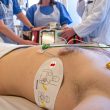As the world becomes increasingly interconnected, it’s no surprise that technology has revolutionized the way we access healthcare. With telemedicine, patients can now receive medical care from the comfort of their own homes, eliminating barriers to access such as distance and mobility issues. Telemedicine is changing the game for remote healthcare delivery, offering a range of benefits that are transforming the industry as we know it. In this blog post, we’ll explore what telemedicine is all about, its history and different types available today. We’ll also look at some pros and cons of using telemedicine for your health needs so you can make an informed decision on whether it’s right for you!
What is Telemedicine?
Telemedicine is a broad term that refers to the use of technology to provide medical care remotely. This can include video consultations with doctors, remote monitoring of vital signs and health data, and even virtual reality simulations for surgical training.
The concept of telemedicine has been around for decades, but advancements in technology have made it more accessible and effective than ever before. With telemedicine, patients no longer need to physically visit a doctor’s office or hospital to receive quality healthcare services.
One of the key benefits of telemedicine is its ability to improve access to healthcare services for people who live in rural areas or have mobility issues. Telemedicine also reduces wait times for appointments and eliminates the need for patients to take time off work or travel long distances just to see their doctor.
Telemedicine isn’t without its limitations, however. Some conditions require physical examinations which cannot be done virtually. Additionally, not everyone has access to reliable internet connection or the necessary equipment like smartphones or computers needed for successful telehealth appointments.
History of Telemedicine
The roots of telemedicine can be traced back to the late 1800s when medical professionals used the telegraph to communicate with each other about patient care. However, it wasn’t until the development of radio and television technology that remote healthcare delivery truly began to take shape.
In the mid-20th century, hospitals and clinics started using closed-circuit television systems as a way to transmit medical images and records between facilities. This allowed doctors in different locations to confer on complex cases and share their knowledge and expertise with one another.
The advent of personal computers in the 1980s paved the way for even more advanced types of telemedicine such as videoconferencing. With this technology, patients could consult with doctors remotely from their own homes or local clinics, eliminating barriers related to distance or mobility issues.
Today, telemedicine has gone beyond just video consultations. It now includes mobile health apps that allow patients to track vital signs like blood pressure or glucose levels, wearable devices that monitor heart rates and fitness levels, and even robotic assistants that can perform simple tasks like taking a patient’s temperature.
As technology continues to evolve at an astounding pace, there is no doubt that telemedicine will continue its transformational impact on healthcare delivery well into the future.
Types of Telemedicine
There are different types of telemedicine that people can use to receive remote healthcare services. One type is real-time or synchronous telemedicine, which involves two-way communication between a patient and a healthcare provider using video conferencing technology. This method allows patients to have consultations with specialists in other locations without having to travel.
Another type of telemedicine is store-and-forward or asynchronous telemedicine, where medical information such as images and videos are sent electronically from one location to another for review by a specialist at a later time. This method is commonly used for diagnostic purposes and allows doctors to assess the patient’s condition without requiring an in-person visit.
Remote monitoring is also becoming increasingly popular, especially among elderly patients or those with chronic conditions who require constant monitoring of their health status. This type of telemedicine involves the use of devices that measure vital signs such as blood pressure, heart rate, and glucose levels, which can be monitored remotely by healthcare providers.
Each type of telemedicine has its own benefits and limitations depending on the specific needs of the patient. However, all forms provide improved access to quality care while reducing costs associated with traditional office visits.
Pros and Cons of Telemedicine
Telemedicine has provided numerous benefits for healthcare providers and patients alike. One of the main advantages is improved accessibility to medical care, especially for those who live in remote or rural areas. Patients no longer have to travel long distances to see a doctor, reducing transportation costs and time spent away from work.
Another advantage is greater convenience for patients. Telemedicine allows individuals to receive medical consultations from the comfort of their own homes, eliminating the need for them to take time off work or arrange childcare.
Telemedicine also offers cost savings on both sides of the equation. Providers can reduce overhead costs associated with maintaining physical facilities while patients save money by avoiding emergency room visits and unnecessary hospital stays.
However, there are also some downsides associated with telemedicine that must be considered. For example, it may not be suitable for all types of medical conditions – particularly those requiring hands-on diagnosis or surgical intervention.
Additionally, there may be concerns about privacy and security when using online platforms for sensitive health information exchange. There is always a risk that data breaches could occur if proper safeguards aren’t in place.
Despite these limitations, it’s clear that telemedicine holds great potential as a tool for improving healthcare delivery across the globe. As technology continues to advance and more people become comfortable with virtual healthcare options, we will likely see even more widespread adoption of telemedicine in years to come.
Conclusion
Telemedicine has revolutionized the way remote healthcare is delivered. It has become an essential tool for medical professionals to provide quality care to patients who cannot physically visit a hospital or clinic.
Telemedicine offers numerous benefits such as convenient access to healthcare services, reduced wait times, and cost-effectiveness. Patients can receive medical advice and treatment from the comfort of their homes, which saves them time and money while minimizing exposure to contagious diseases.
Despite its many advantages, telemedicine also faces some challenges like technical difficulties and lack of adequate infrastructure in certain regions. However, with continued advancements in technology and improved policies that support its implementation globally, these challenges can be overcome.
Telemedicine represents a significant improvement over traditional healthcare delivery methods. Medical practitioners should embrace this innovative approach fully because it not only improves patient outcomes but also enhances the efficiency of healthcare systems worldwide.












